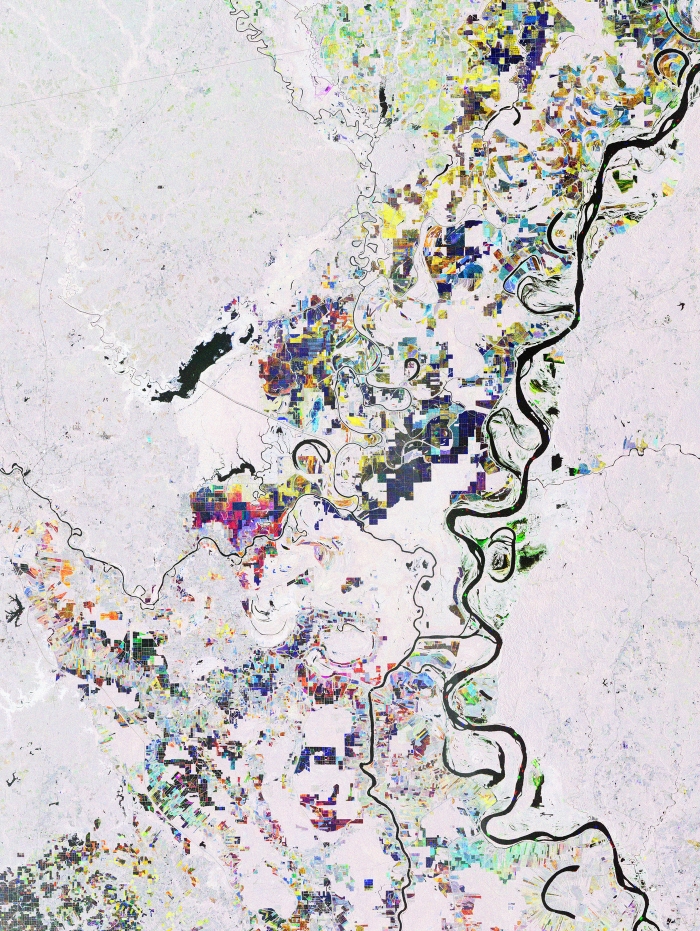Earth from Space – The Mississippi River

Mississippi River, one of the longest rivers in North America, is featured in this multi-temporal radar image captured by the Copernicus Sentinel-1 mission.
The Mississippi River is one of the world’s major river systems in size, habitat diversity and biological productivity. The river flows 3766 km from its source at Lake Itasca through the centre of the continental United States to the Gulf of Mexico.
The area pictured here shows where the Mississippi straddles the states of Louisiana and Mississippi. The image combines three radar acquisitions from the Sentinel-1 mission taken 12 days apart to show changes in crop and land conditions over time. Bright colours in the image come from changes on the ground that have occurred between acquisitions.
Water bodies, including the Mississippi River, visible in the far right, and Catahoula Lake, in the far left, appear black as water surfaces reflect the radar signal away from the satellite. If we take a closer look, we can see cargo ships travelling along the Mississippi. Ships from 7 April 2022 appear in red, those from 19 April appear in green, and those from 1 May appear in blue.
White areas in the image indicate the various types of vegetation that surrounds the river, including the Kisatchie National Forest – the only national forest in Louisiana. The Mississippi is a classic example of a meandering alluvial river with its loops and curls along its path leaving behind meander scars, cutoffs and free-standing ‘oxbow lakes’.
The Mississippi River Basin is home to a variety of agricultural activity. Nutrient-rich soil from sediment deposits through the floodplain supports cropland close to the river and its tributaries. Rectangular fields in the image are cultivated land. The farming of cotton and soybean make up a significant portion of the areas economic production.
Sentinel-1A was the first satellite to be launched for Copernicus – the Earth observation component of the European Union’s space programme. Looking ahead, the upcoming Sentinel-1C satellite scheduled to lift off on ESA’s Vega-C rocket from Europe’s Spaceport in French Guiana in the first half of 2023, will continue the critical task of delivering key radar imagery for a wide range of services, applications and science.
The satellite is now at Thales Alenia Space’s Cannes plant on the French Riviera after it successfully completed all integration tests this summer in Rome, Italy. It will now undergo a final series of tests in Cannes, including radiofrequency performance checks in the facility’s anechoic chamber.









